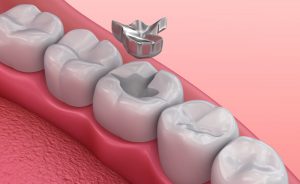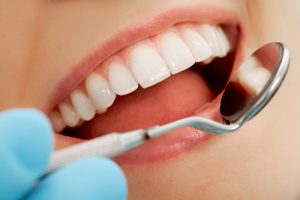 Maintaining a good oral hygiene routine during bedtime is even more important than your routine in daytime. Anything can happen overnight, while you sleep. Food debris and bacteria can wreak havoc on your teeth and gums during sleep, when there is almost no bacteria-washing saliva produced. Most of us have enough time to brush our teeth properly at night but wait until we’re too exhausted to do so.
Maintaining a good oral hygiene routine during bedtime is even more important than your routine in daytime. Anything can happen overnight, while you sleep. Food debris and bacteria can wreak havoc on your teeth and gums during sleep, when there is almost no bacteria-washing saliva produced. Most of us have enough time to brush our teeth properly at night but wait until we’re too exhausted to do so.
And when you sleep, there are many ways to improve and preserve good oral health. Here are a few helpful tips for getting through the evening.
Continue reading Maintain A Good Bedtime Oral Hygiene Routine


 Gum recession is a common dental concern and a serious one. In most cases, gum recession is caused by gum disease development by either poor oral hygiene and or tobacco use, although alternative causes such as hormones, genetics, and inadequate brushing habits are known. Once your gums recede, they won’t grow back, even after your gum disease has been treated, which can leave you open to continuous infection, and your teeth look lengthy and unsightly.
Gum recession is a common dental concern and a serious one. In most cases, gum recession is caused by gum disease development by either poor oral hygiene and or tobacco use, although alternative causes such as hormones, genetics, and inadequate brushing habits are known. Once your gums recede, they won’t grow back, even after your gum disease has been treated, which can leave you open to continuous infection, and your teeth look lengthy and unsightly. Normally, when you go to the dentist there are two consequences. You will say that you’re all right (although you’re certainly supposed to floss more) and in six months they’ll see you or you’ll say the dreaded word … cavity.
Normally, when you go to the dentist there are two consequences. You will say that you’re all right (although you’re certainly supposed to floss more) and in six months they’ll see you or you’ll say the dreaded word … cavity. Each
Each  Scaling or deep washing is a no-chirurgical
Scaling or deep washing is a no-chirurgical  The
The  The
The  There
There  Periodontal disease is highly prevalent in adults across the United States. It is important to regularly see your dentist so you can catch this condition early on and undergo proper treatment. We help patients prevent and treat gum disease, as well as educate them regarding the ways they can keep their gums healthy.
Periodontal disease is highly prevalent in adults across the United States. It is important to regularly see your dentist so you can catch this condition early on and undergo proper treatment. We help patients prevent and treat gum disease, as well as educate them regarding the ways they can keep their gums healthy. How to Manage Fear and Anxiety at the Dentist
How to Manage Fear and Anxiety at the Dentist Visit Your Periodontist
Visit Your Periodontist There are several unique ways to keep your
There are several unique ways to keep your  Gum disease, also known as periodontal disease, affects many people from all walks of life. It is estimated that more than 80% of the U.S. population suffers from some form of gingival inflammation or infection and most people are not aware of it. Symptoms can range from mild gum irritation and swelling to serious damage to the gums and even the jaw bones. If not treated, gum disease can worsen and spread, making it vital to practice preventative care and control infections before they become severe.
Gum disease, also known as periodontal disease, affects many people from all walks of life. It is estimated that more than 80% of the U.S. population suffers from some form of gingival inflammation or infection and most people are not aware of it. Symptoms can range from mild gum irritation and swelling to serious damage to the gums and even the jaw bones. If not treated, gum disease can worsen and spread, making it vital to practice preventative care and control infections before they become severe. Gum recession is a common and serious dental concern. In most cases, gum recession is caused by the progression of gum disease either through poor oral hygiene and or tobacco use, but there are alternate causes such as hormones, genetics, and improper brushing habits. Once your gums recede, they will not grow back, even after your gum disease is treated, which can leave them open to continuous infection and teeth looking unsightly and long. Many gum recession treatments are invasive, require multiple appointments, and have long recovery times, which is why we offer gum rejuvenation therapy through the Pinhole Surgical Technique (PST).
Gum recession is a common and serious dental concern. In most cases, gum recession is caused by the progression of gum disease either through poor oral hygiene and or tobacco use, but there are alternate causes such as hormones, genetics, and improper brushing habits. Once your gums recede, they will not grow back, even after your gum disease is treated, which can leave them open to continuous infection and teeth looking unsightly and long. Many gum recession treatments are invasive, require multiple appointments, and have long recovery times, which is why we offer gum rejuvenation therapy through the Pinhole Surgical Technique (PST).